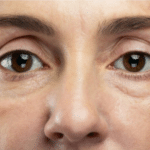Hair loss is a common concern that can impact individuals of all ages and genders. As a dermatologist, I often encounter patients seeking solutions to this distressing issue. In this concise guide, we’ll discuss when and why it’s crucial to see a dermatologist and explore effective treatment options available.
When to See a Dermatologist: If you’re noticing more hair in the shower drain or have concerns about changes in your hair’s thickness or texture, it’s time to consult a dermatologist. Hair loss can result from myriad factors, including genetics, hormonal imbalances, stress, and medical conditions. Seeking professional advice early can help identify the root cause and guide you towards appropriate treatment options.
Treatment Options:
1. Topical Minoxidil: One of the most widely recommended over-the-counter treatments is topical minoxidil. Applied directly to the scalp, minoxidil stimulates hair growth and helps prevent further loss. It’s an easy-to-use option, but consistency is key. Results may take several months, so patience is essential.
2. Oral Medications:
a. Spironolactone: This medication, originally designed to treat high blood pressure, is also effective in addressing certain types of hair loss, particularly in women. It works by reducing the effects of hormones that can contribute to hair thinning.
b. Oral Minoxidil: In addition to the topical form, oral minoxidil is available. It can be prescribed by dermatologists in specific cases where topical solutions may not be sufficient.
c. Finasteride: This prescription medication is commonly used to treat male-pattern baldness. It works by inhibiting the hormone dihydrotestosterone (DHT), which plays a role in hair loss. It’s crucial to discuss potential side effects and eligibility for this medication with your dermatologist.
3. Platelet-Rich Fibrin (PRF) Injections: An emerging and promising option is Platelet-Rich Fibrin (PRF) injections. By drawing a small amount of the patient’s blood, processing it to concentrate platelets, and injecting the resulting PRF into the scalp, this procedure aims to stimulate hair follicles and promote regrowth.

If you’re grappling with hair loss, taking proactive steps with the guidance of a dermatologist can make a significant difference. Early intervention allows for a comprehensive evaluation, identification of the root cause, and the formulation of a tailored treatment plan. Topical minoxidil, oral medications, and PRF injections are among the diverse options available. Each has its unique benefits, and the choice depends on factors such as the type and cause of hair loss, as well as individual preferences. Remember, there’s no one-size-fits-all solution, and results can vary. Consult with a dermatologist to explore the most suitable approach for your specific situation. Together, we can navigate the path toward healthier, fuller hair.





 New Year, New Boundaries: Redefining Boundaries For A Peaceful New Year
New Year, New Boundaries: Redefining Boundaries For A Peaceful New Year 